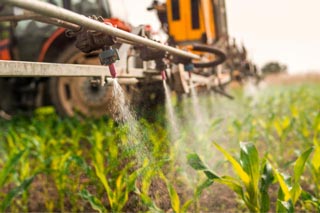Weed Resistance Management
Sep 03, 2020

Chad Bearinger
Agronomy Sales Manager
Managing weed resistance has become a major challenge for many, and these are only a few topics to consider when managing your herbicide programs. Resistance is growing in terms of the number of weeds building resistance and the number of herbicides they are becoming resistant to. Making sure we try and protect our remaining selection of effective herbicides has never been more important. Here are a few topics to consider when managing your herbicide programs to battle weed resistance:
What am I spraying?
Herbicides, fungicides, or insecticides – for soil incorporated, pre-emergence or post-emergence? If post-emergence, contact or systemic? Is it a wettable powder, emulsifable concentrate or dry-flowable? Will two or more chemicals be used in combination?
What nozzle do I need to increase my success rate?
To maximize performance and profitability, you should be making sure you have the proper spray nozzles for your application and that they are performing properly. The spray nozzles you select will determine:
- The amount of chemical applied to an area
- The uniformity of the application
- The coverage of the chemical on the target surface
- The amount of potential drift
Do I know and understand my target weeds and how to manage them?
- Proper identification of the weeds I am spraying
- Am I using a diversified approach to limit seed production and reduce the seed bank?
- Do I scout my fields regularly?
- Do I understand the life cycle of my target weeds?
- Am I using MULTIPLE EFFECTIVE modes of action against of my target weeds?
- Am I applying the herbicide at the recommended weed height and labeled rate?
- Am I using the correct nozzle for the herbicide I chose?
- Have I considered increasing my carrier rate?
- Have I thought about the weather?
- Am I overlapping residuals?
